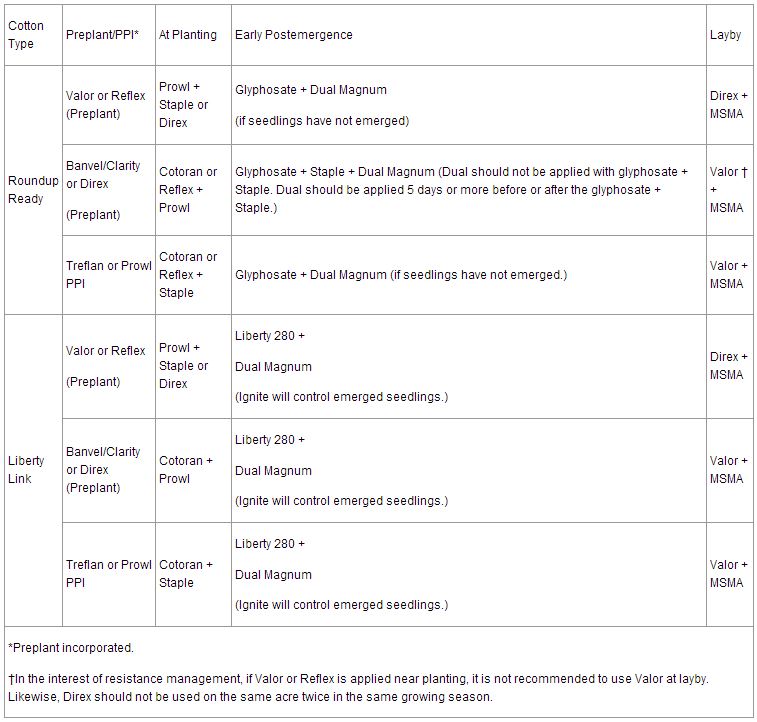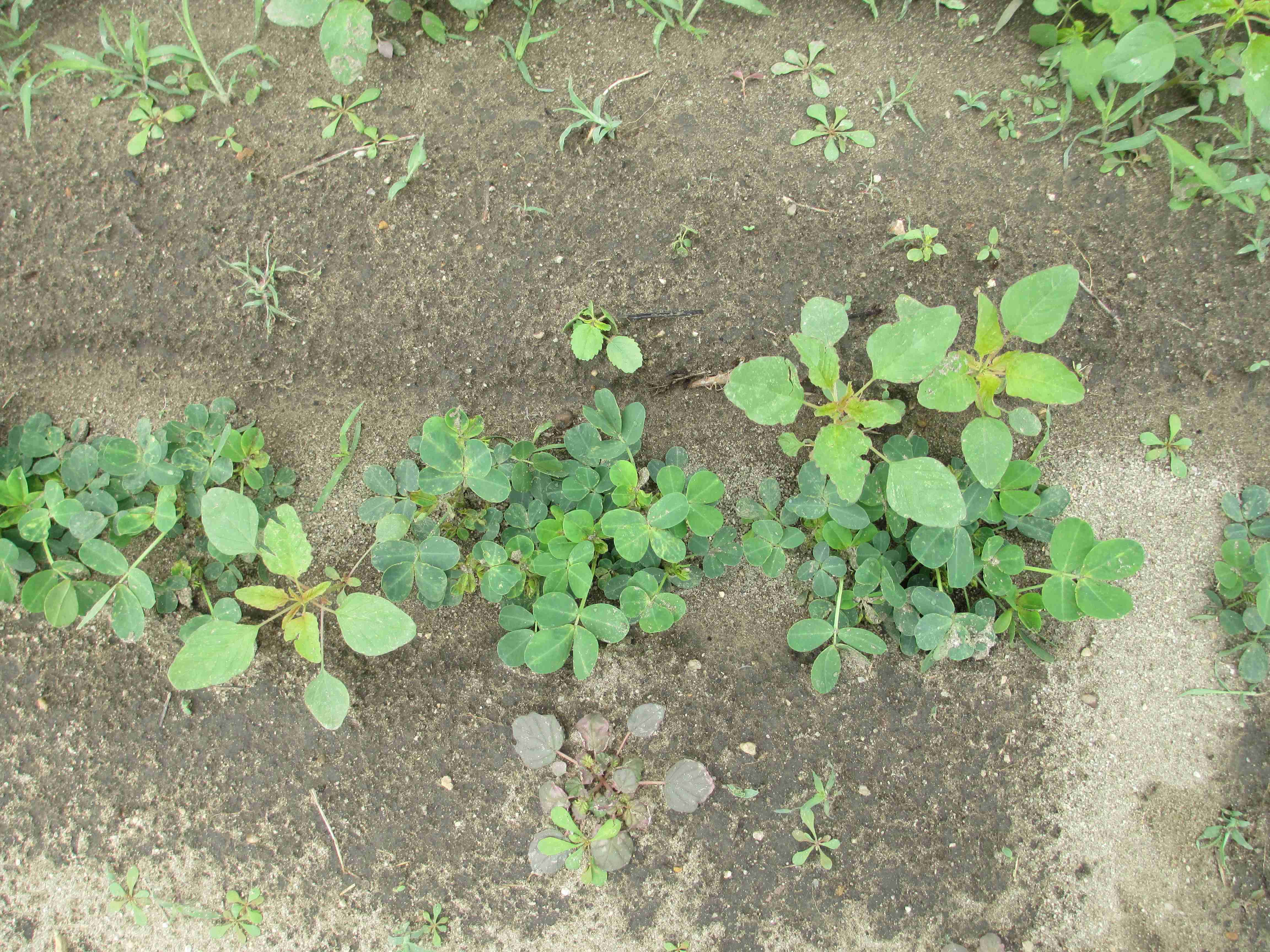
Palmer amaranth growing where the center pivot was located at the time of pre-emergence herbicide application. Photo: J. Thompson
Panhandle farmers are busy. Many are still planting peanuts and cotton, some are harvesting wheat and oats, cutting hay, putting out fertilizer and spraying for weeds and thrips.
Herbicide applications are going out in areas that are dry enough to get equipment in. Some fields are being overlooked and others not being sprayed on time. Timing of herbicide application for Palmer Amaranth (pigweed) control is critical now, as crops emerge and pre-emergence applications wear off.
Palmer amaranth can grow in excess of 1 inch per day and be next to impossible to control once it is 6 inches tall or more. If you see 4 inch Palmers on Friday, and you wait until Monday to spray, you will probably not get good control of those weeds. The goal should be to target weeds when they are 4 inches or less and combine foliar and soil residual herbicides to prevent new weeds from emerging.
With this in mind, it’s important to scout fields early for emerging Palmer. Getting herbicides out on time is easier said than done, given that there are so many other things that growers have on their plates right now.
This palmer amaranth in the photo above was sprayed with glyphosate over a week ago. Notice how it was damaged but survived, and the cutleaf evening primrose to the right did not. When escapes occur, weeds will need to be hand-pulled prior to seed production. If using Liberty Link cotton, be sure not to make more than 2 applications (1 would be better) of Liberty per season unless you want to develop Liberty resistance as well!
The field in the picture above is a prime candidate for a paraquat (Gramoxone) + Dual Magnum application. Paraquat will burn peanut foliage, but is the best option for palmer amaranth that is 4 inches or less in height. Paraquat can be applied at true cracking and up until 28 days after cracking. Since adding Dual Magnum increases foliage burn, some growers choose to add 4 – 8 oz./ acre of Basagran to lessen the burn.
The following are basic recommendations for cotton and peanuts from the publication: Control of Palmer Amaranth in Agronomic Crops.


For more information, download: Control of Palmer Amaranth in Agronomic Crops.
- Carinata Starting to Come Up in Jackson County - December 12, 2014
- Wheat Production Considerations for 2014-2015 - November 10, 2014
- Peanut and Cotton Harvest Video 2014 - November 10, 2014


